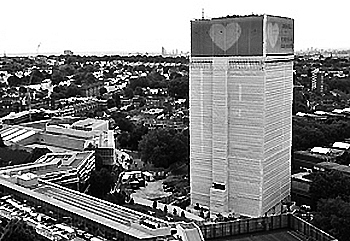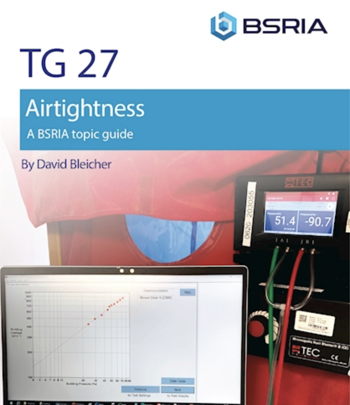Ground investigation
Contents |
[edit] Introduction
The level of detail and quality of information available about ground conditions will influence the project team’s ability to develop an appropriate, efficient and easy to implement design and to deal with issues that may arise during construction work, such as the presence of faults, underground obstructions, groundwater, and so on, without incurring unnecessary costs or delays.
Ground investigations are a means of determining the condition of the ground, ideally before beginning construction works. They focus specifically on intrusive geotechnical work such as trial pits and boreholes, and so differ from wider ‘site investigations’ which tend to involve the collation of more general information from the client, from desk studies, walkover surveys, and so on.
Ground investigations help determine:
- Water table level and water flow.
- The nature of faults, fissures and voids in the underground.
- Ground layer thicknesses and the mechanical properties of soil.
- Detailed information about soil and ground samples.
[edit] Investigation techniques
There are a number of techniques that can be used for ground investigations, either individually or in combination. When deciding on the nature, scope and level of detail of ground investigations, consideration should be given to the positive influence information can have on reducing project risks, rather than just the costs of the investigations themselves.
[edit] Trial pits and trenches
Trial pits and trenches are a means of investigating shallow ground conditions and developing an understanding of the profile of soils within the ground. They can be particularly useful where buried structures or contamination is suspected or needs further investigation.
They can be excavated by hand or backhoe excavator, generally to a depth of up to 3.5-4.5 m. Trial pits and trenches can be more cost effective than boreholes but they do not allow for the same depth.
[edit] Window sampling, windowless sample boreholes and dynamic probing
Window sample and windowless sample boreholes can be a quick and economical method for obtaining soil samples, which are recovered by inserting tubes of varying lengths into the ground. They are generally restricted to shallow depths but are suited to sites with limited access, sloping sites, and where minimal disturbance is required.
This is a particular advantage with window sampling which uses tubes with longitudinal openings cut into them and are inserted using either hand-held pneumatic samplers or tracked percussive samplers.
Dynamic probes use similar plant to provide strength profiles of the ground and enable a range of instrumentation to be installed such as piezometers, gas and groundwater monitoring wells, and so on.
[edit] Light cable percussive boreholes
Light cable percussive boreholes can be suitable for sites that have poor access or low headroom. Tripod rigs are used to drill boreholes of up to 450 mm diameter and depths of up to 70 m. This can be a relatively economical technique and is suitable for weaker soils and where high-quality samples are required.
[edit] Rotary boreholes
Rotary boreholes are used where drilled exploration through rock and other solid geological formations such as dense gravel is required. Depths of up to 100 m can be achieved. Bedrock samples can then be taken to the laboratory for examination.
Rotary open-hole boreholes are drilled where an understanding of the presence of voids is more important than the structural details of the ground, and are typically used in areas where mine workings are likely.
Rotary cored boreholes are drilled when the structural details of the underlying rock are required. A core barrel is lowered into the drilled hole and a flush circulated with air/mist or water.
[edit] Sonic drilling
Sonic drilling involves sending high frequency mechanical oscillations down a drill string to the bit. These vibrations fluidize soil particles at the face of the bit which allows for easy penetration through most geological formations where other techniques may be less successful, particularly where the strata is varied. The specific geological conditions will determine the precise frequency to be used.
[edit] Related articles on Designing Buildings Wiki
- Bearing capacity.
- Building on fill.
- Conceptual site model.
- Concrete in aggressive ground (SD 1).
- Contaminated land.
- Desk study.
- Development appraisal.
- Ecological survey.
- Geophysical survey.
- Geotechnical engineering.
- Ground conditions.
- Ground improvement techniques.
- Insitu testing of soils.
- Laser scanning.
- Pre construction information.
- Site appraisal.
- Site information.
- Site investigation.
- Site surveys.
- Soil report.
- Soil survey.
- Walkover survey.
[edit] External references
Featured articles and news
The UK's Modern Industrial Strategy: A 10 year plan
Previous consultation criticism, current key elements and general support with some persisting reservations.
Building Safety Regulator reforms
New roles, new staff and a new fast track service pave the way for a single construction regulator.
Architectural Technologist CPDs and Communications
CIAT CPD… and how you can do it!
Cooling centres and cool spaces
Managing extreme heat in cities by directing the public to places for heat stress relief and water sources.
Winter gardens: A brief history and warm variations
Extending the season with glass in different forms and terms.
Restoring Great Yarmouth's Winter Gardens
Transforming one of the least sustainable constructions imaginable.
Construction Skills Mission Board launch sector drive
Newly formed government and industry collaboration set strategy for recruiting an additional 100,000 construction workers a year.
New Architects Code comes into effect in September 2025
ARB Architects Code of Conduct and Practice available with ongoing consultation regarding guidance.
Welsh Skills Body (Medr) launches ambitious plan
The new skills body brings together funding and regulation of tertiary education and research for the devolved nation.
Paul Gandy FCIOB announced as next CIOB President
Former Tilbury Douglas CEO takes helm.
UK Infrastructure: A 10 Year Strategy. In brief with reactions
With the National Infrastructure and Service Transformation Authority (NISTA).
Ebenezer Howard: inventor of the garden city. Book review.
The Grenfell Tower fire, eight years on
A time to pause and reflect as Dubai tower block fire reported just before anniversary.
Airtightness Topic Guide BSRIA TG 27/2025
Explaining the basics of airtightness, what it is, why it's important, when it's required and how it's carried out.
Construction contract awards hit lowest point of 2025
Plummeting for second consecutive month, intensifying concerns for housing and infrastructure goals.
Understanding Mental Health in the Built Environment 2025
Examining the state of mental health in construction, shedding light on levels of stress, anxiety and depression.






















Comments